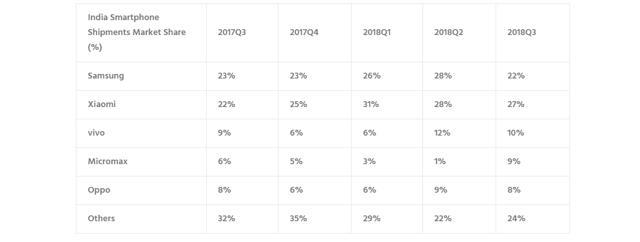Galaxy M: Samsung takes on Xiaomi with new budget smartphone series
Samsung Galaxy M10, M20 and M30 smartphones will launch in India on January 28. Here’s everything you need to know about Samsung’s new Xiaomi Redmi rivals.

Samsung is betting big on its upcoming Galaxy M-series of phones set to launch in India on January 28. The company aims to win over millennials with Galaxy M phones featuring big 5,000mAh battery, triple-rear camera system, and Infinity-U and Infinity-V cutout displays.
Galaxy M phones also hold the key for Samsung's fresh attempt to win back market share from Xiaomi. To counter the Chinese rival, Samsung will introduce Galaxy phones in a highly competitive sub-₹10,000 and sub-₹20,000 segments and sell them exclusively online via Amazon India and its own e-store. The new phones will come with their own variants that will cover key price points in these two categories.
Samsung is set to launch Galaxy M10, M20 and M30 smartphones on January 28. Galaxy M20 will be featuring 5,000mAh battery and triple-rear camera setup, similar to Galaxy A7 2018. Consumers can expect features such as large screens (6.2-inches and above), latest Exynos chipset and fast charging support.
"... Millenials are the alpha users. They put technology through paces like no other consumer really does. Their consumption including content creation, sharing or use of OTT services is very demanding," said Samsung India Senior Vice President Asim Warsi while explaining the new M-series.
"So, when we designed these phones, we packed everything that is there for millenials. If we have to summarise in one word, these phones [Galaxy M] pack power and powerful specs for millenials," he added.
Warsi said that the company is aiming to double its online business on the back of these new Galaxy M phones. While these phones have been designed for India, Galaxy M phones will also be rolled out in other markets, he added.
Samsung's Galaxy M-series will come at a time when Xiaomi has continued to gain market share in India. According to Counterpoint Research report for the Q3 2018, Xiaomi recorded highest shipment in a quarter and captured 27% shipments market share. Samsung had about 22% share.


Citing GfK data, Warsi told PTI the Samsung exited the December 2018 quarter with a 40% value share of the market.
Industry watchers believe Samsung still has chances in the crucial budget smartphone segments.
"Samsung can still give a fight to Xiaomi, if it can take some part of its top end features into the 10-20k segments. For instance, its camera and display quality. If it could bring a Galaxy S7 class camera (nearly 3 years old) into a new sub-20k model, it could be the best sub-20k smartphone camera around. On the other hand simply making its older phones available cheaper will not work, just as it has not worked for Apple. It has to think creatively, out of the box," said industry expert Prasanto K Roy.
"Samsung has access to latest display, camera, memory and connectivity technologies from hardware perspective. Further, it can enjoy global scale for the same 'M' models more than Xiaomi," Neil Shah, Partner and Research Director at Counterpoint Research told IANS.
Catch all the Latest Tech News, Mobile News, Laptop News, Gaming news, Wearables News , How To News, also keep up with us on Whatsapp channel,Twitter, Facebook, Google News, and Instagram. For our latest videos, subscribe to our YouTube channel.






























